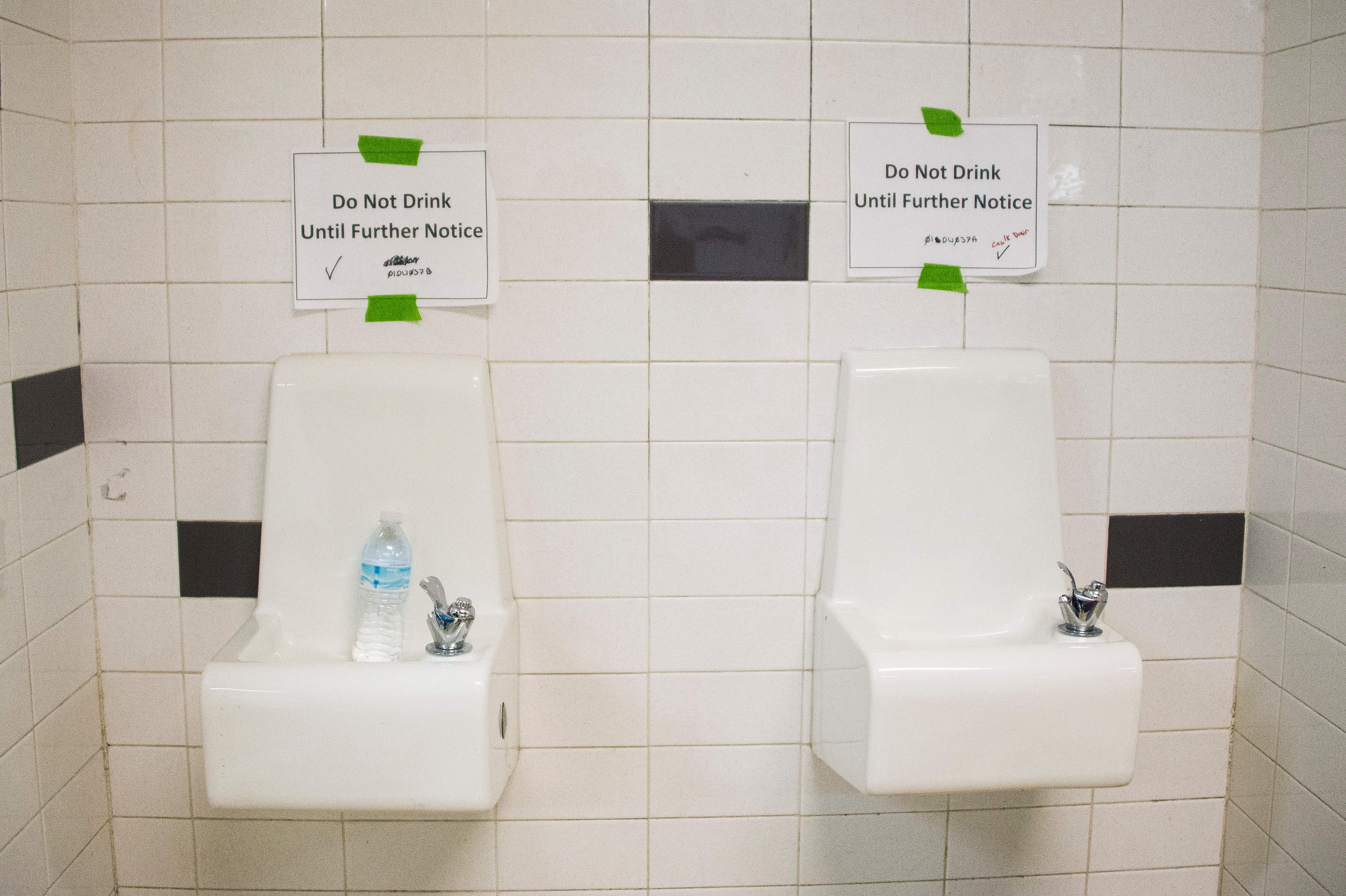Create a free profile to get unlimited access to exclusive videos, breaking news, sweepstakes, and more!
5 Things You Won't Believe About The Flint, Michigan Water Issue
Four years later, residents still don’t have good water. Here’s some more shocking facts.

When brown, smelly water spewed from taps in Flint, Michigan after the city’s water sourcing switch from Lake Huron to the Flint River in 2014, residents were told the water would just be fine, in what has been characterized as a “wait and see” approach. Flint was once a thriving town, home to the largest General Motors factory. Its decline during the 80s, after GM downsized, has lead us to this moment where Flint residents still do not have potable water.
Until 2016, investigation and personal testimonies prove that low-income, mostly black families had been told it was okay to consume and bathe in lead contaminated water at levels, leading to lifetime health effects and an outbreak of Legionnaires disease due to inadequate mitigation of the problem, according to NPR. Residents have reported rashes upon contact with water, as well as hair loss, and in children, potential brain damage.
But the crisis, framed as a case of neglect, touches on Michigan’s overall flawed water systems. Four years later, we examine some important points you might have missed:
1. Government Officials Really Messed Up
According to CNN, a number of Michigan government officials have been charged with negligence in handling the crisis in addition to involuntary manslaughter since 2016, while Governor Rick Snyder’s approval ratings have plummeted to 46 percent. On April 6, Governor Snyder announced that the state would no longer provide free bottled water for Flint residents. As reported by the New York Times, Flint city officials were not in favor of the decision, while the state maintains that lead levels have been below federal limits for two years. Mother Jones reported that Flint residents are still incredibly distrustful of the city’s water and that many plan to continue using bottled water since pipe replacement isn’t going to be completed until 2020. Two government officials have pleaded guilty, while thirteen are facing jail time — and won’t be facing trial until later this year. Meanwhile Governor Snyder is still governor.
2. Nestlé Can Draw Even More Water from Michigan
On April 2, the Michigan Department of Environmental Quality approved a permit for Nestlé Waters North America, Inc. (Nestlé) to siphon 200,000 more gallons of groundwater per day to bottle for drinking water. For context, Nestle already pumps 130 million gallons of water from the Twin Creek River in western Michigan for the shocking price of $200 a year according to Public Radio International. Over 80,000 people sent public comments against the proposal, as opposed to the 75 people who are in favor. Though Nestlé often touts its commitment to clean and accessible water around the world, the company’s chairman, Peter Brabeck, stated in a video that calling water a human right is “extreme.” He addressed this later in a blog post where he said his quote was taken out of context.
3. Detroit Shut Down Water, PETA Promised To Pay Bills If People Went Vegan
In 2014, the city of Detroit shut down water for thousands of customers who hadn’t paid their bills — and were met with massive protest. The city’s Water and Sewage Department was already in debt, partly of what NPR calls a “token attempt” to collect past-due bills. The United Nations declared the shutoffs constituted a violation of human rights. While activists and actors like “The Hulk”’s Mark Ruffalo supported the cause, PETA waltzed in, offering to pay individuals’ water bills — but only if they committed to going vegan for a month. (Though Detroit is no longer the food desert that media often makes it out to be, veganism often excludes low-income communities.) Plus, offering to pay someone’s water bills in exchange for anything is morally questionable.
4. Another Company Was Approved to Use Lake Michigan’s Water
A Taiwanese company named Foxconn has just been approved as of April 25th to drain water from Lake Michigan. Foxconn has been approved to use seven million gallons a day from the lake to create LCD screens at the manufacturing plant yet to be built in Mount Pleasant, Wisconsin, which makes the lake water in this case under Wisconsin’s jurisdiction. Though activists argue that this violates the Great Lakes Compact between Illinois, Indiana, Michigan, Minnesota, New York, Ohio, Pennsylvania and Wisconsin, Foxconn subverted this by filing the request specifically in Racine, Wisconsin. There, the application had a softer review as it was argued for “public water supply purposes” as noted on Wisconsin’s Department of Natural Resource’s site. The Government Affairs Director of the Wisconsin League of Conservation Voters, Jennifer Giegerich, said at a public hearing that allowing this would set a dangerous precedent in how lake water is managed. “If we allow this to happen, it’s going to happen all over the basin, with other states and then it’s going to be the thirsty states and nations to come,” she said, leaving less water for states like Michigan.
5. Toxic Chemicals Were Found in Lake Huron
It seems like Lake Huron might not be the solution to Flint’s water crisis. In February of this year, The Detroit News reported that toxic chemicals were found in the Lake’s waters in the Saginaw-Midland Municipal Water Supply Corporation system. Though levels are far below EPA standards, local officials are still concerned. Said Kim Mason, the city of Saginaw’s water director, “When we read the reports in other communities, it wasn’t something we thought we’d have a problem with. I can’t say it’s completely shocking, but it isn’t something I thought would be a concern looking at the source of water [Lake Huron] we’re using.”
[Photo: Water fountains at Flint Northwestern High School in May 2016, where President Obama joined a neighborhood roundtable. By Jim Watson/AFP/Getty Images]


